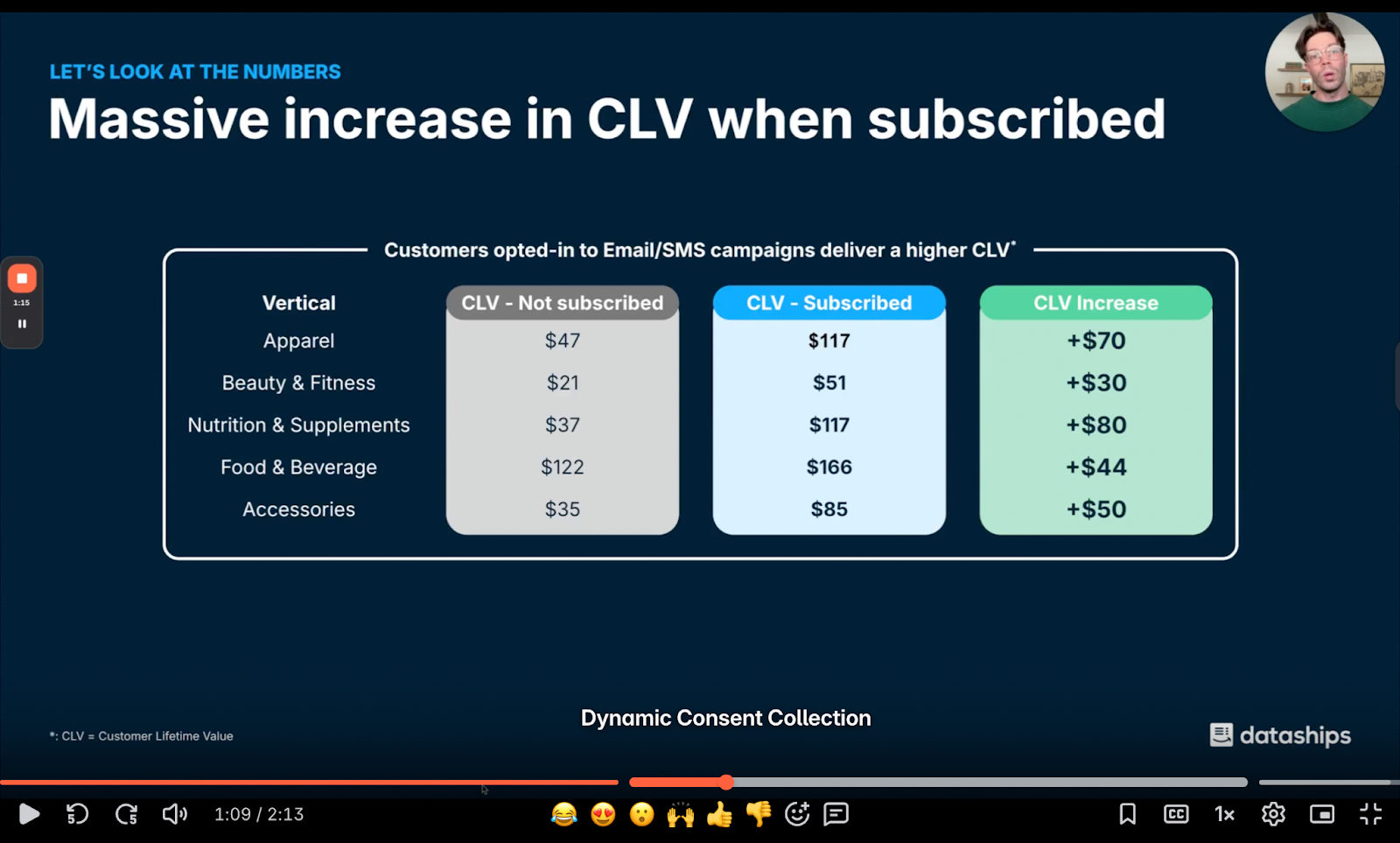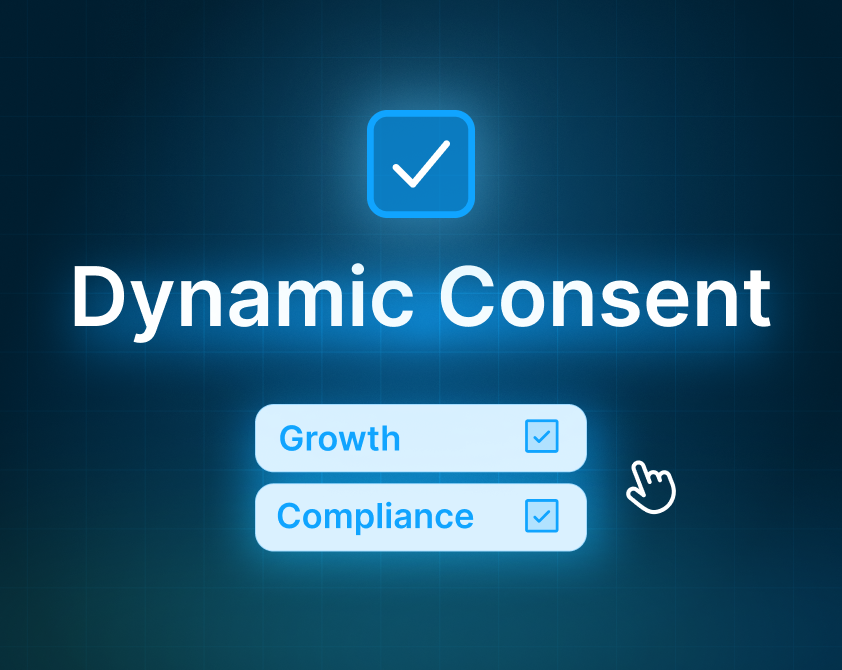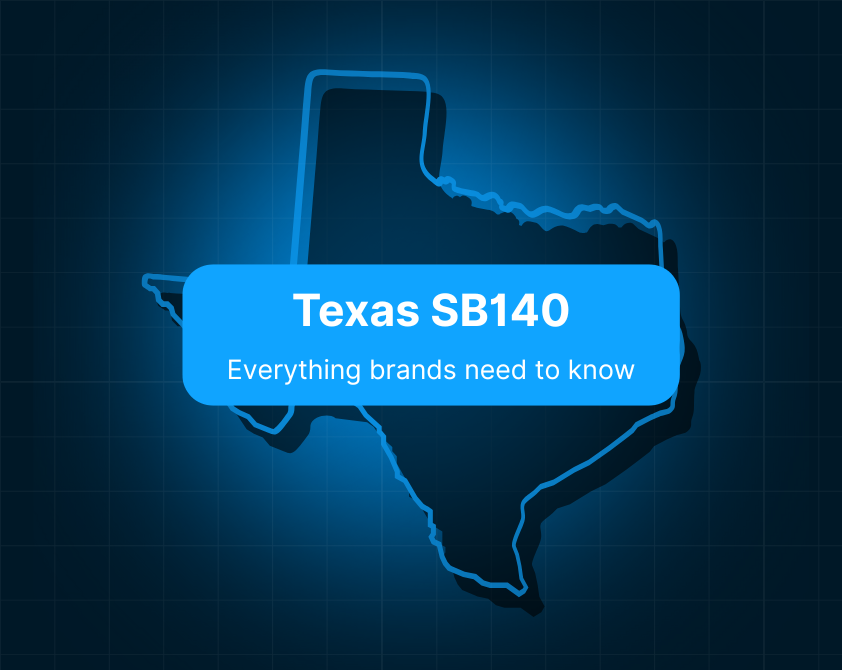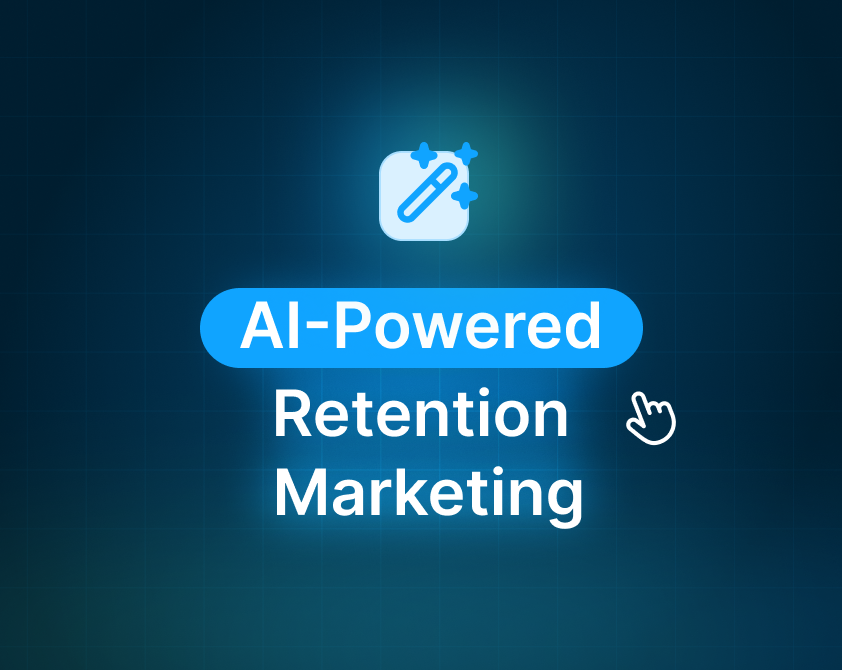Dynamic Consent: The Overlooked Lever for LTV Growth
For ecommerce brands, LTV is often treated as a fixed outcome that's tied to product category, AOV, or purchase frequency — and challenging to improve via marketing. And while that is largely true, LTV also hinges on something far more basic: whether brands can talk to their customers after a sale.
That ability depends on consent.
A robust, compliant list isn't just a legal safeguard — it's the foundation for everything that drives LTV. Every post-purchase flow — from welcome emails to replenishment reminders and upsell offers — requires permission to send. A small, non-compliant marketing list full of unsubscribed contacts means less of an audience for retention.
We'll break down how consent impacts brands' ability to engage, segment, and grow — and why dynamic consent is the missing piece of the LTV puzzle.
How Robust, Compliant Marketing Lists Increase LTV
When marketing lists are built on genuine opt-ins, every message reaches people who actually want to engage with a brand. That means stronger targeting, higher engagement, and ultimately, more revenue throughout the customer lifecycle.
Clean Lists Lead to Better Segmentation
The quality of opt-ins determines the quality of targeting. When customers compliantly subscribe during checkout, brands collect far more than an email address and can leverage:
- Behavioral data to segment audiences based on real actions and interests
- Clear purchase intent to pinpoint likely repeat buyers
- Regional context to personalize messaging
Clean opt-ins offer true segmentation power because they represent real engagement signals. Compare that to scraped emails or opt-ins from pop-ups, which lack the necessary context and add volume but not insights.
Better Segmentation Powers Higher Engagement
When segmentation is based on real behavior, better engagement naturally follows.
To begin with, compliant lists reduce spam complaints, hard bounces, and unsubscribes, improving inbox placement and message performance over time.
Plus, opted-in contacts open, click, and convert more consistently than passive or non-compliant contacts because they've explicitly chosen to stay engaged. They're not surprised by messages or annoyed by unexpected communications.
High-Quality Engagement Drives More Revenue
Scaling opt-in rates transforms the entire customer base and amplifies revenue at every stage.
By filling 30-, 60-, and 90-day cohorts with genuinely engaged customers, brands unlock more predictability in repeat purchase rate and meaningful lifts in lifetime value.
The difference is dramatic. In apparel, for example, customers who opt in average $117 in LTV compared to just $47 for those who don't. That's a 149% increase powered by ongoing engagement, not heavier discounts or aggressive tactics.
Just by improving their consent flows, some Shopify brands have raised their opt-in rates from 22% to 82%. That enables them to nurture 820 high-value customers per 1,000 buyers, up from 220. They're building a pipeline of loyal, high-value customers ready for ongoing engagement.

Balancing Compliance and Growth is a Tough Act for Growing Brands
The benefits of building a healthy, compliant list aren't a secret — but actually executing on it is another story.
The reality is, most ecommerce platforms approach compliance with a one-size-fits-all solution: basic checkbox options that either lock brands into rigid compliance (and tank opt-in rates) or favor rapid growth (and invite legal risk).
There's rarely a middle ground that feels safe and sustainable — especially in new markets when the complexity increases. Add to that the lack of internal legal expertise, technical resources, or time to customize consent flows, and it's easy to see why so many brands stick with the defaults, even if it means missing out on valuable, engaged subscribers.
The Shopify Consent Default Dilemma
Shopify is a great example of this. Its built-in consent settings are the default for many brands in their early stages because they're easy to implement and technically compliant for basic setups. But "technically compliant" doesn't mean optimized for growth.
Shopify does enable regional flexibility with different checkbox states by location. But the actual configuration options are limited, with little room for customization or improvement, leading to basic legal coverage without optimization. The result? Baseline compliance with lower opt-in rates.
That's obviously not ideal long-term. Brands might be able to stay compliant, but they can't scale their retention marketing as quickly as they’d like to. What brands really want… is both: compliance and growth.
Dynamic Consent Bridges the Gap
Dynamic consent proves brands don't have to choose between growth and compliance. By automatically adapting to each customer's specific legal requirements with optimized language, it delivers both.
For customers, the consent prompt appears naturally in checkout, the language is localized, and SMS verification happens instantly without leaving the purchase flow. This means no confusing checkbox logic or daunting legalese.
Brands no longer need to worry about regional checklists, using underperforming consent setups, or maintaining separate flows. Everything adapts automatically, so they stay compliant while opt-in rates rise across the board.
Dataships' Dynamic Consent Supercharges Opt-Ins for Shopify Brands
Dataships' dynamic consent engine automates compliance logic and improves opt-in performance across email and SMS. What would normally require legal teams, developers, and ongoing maintenance is done through a simple Shopify app installation.
The app integrates directly with brands' existing checkout flow without disrupting the purchase experience. It also connects seamlessly to Klaviyo and Yotpo to instantly sync consented contacts.
Plus, built-in legal protection means coverage from day one. The system automatically adjusts to changing privacy laws across all regions, so it's always compliant without manual updates. Every consent interaction is logged with timestamps, geographic location, exact wording shown, and customer response in an audit-ready record.
Dataships in Action
Dataships lets brands A/B test dynamic consent against their current setup. Within 28 days, brands have clear data on opt-in rates, list growth, and LTV differences between the two approaches.
Benchmade ran this exact test and discovered they were missing 2,448 potential subscribers every month. Those incremental opt-ins from the Dataships side translated directly to $124K in additional monthly LTV. They now have a 97% email opt-in rate, just by changing how they captured consent.
IQBAR captured 17 times more SMS opt-ins and 1.6 times more email opt-ins after implementing Dataships' dynamic consent collection. These newly acquired subscribers became a valuable growth engine, fueling a 36% repeat purchase rate and significantly boosting customer retention.
How much revenue are you leaving on the table? Run an A/B test with Dataships and find out in under 30 days.














